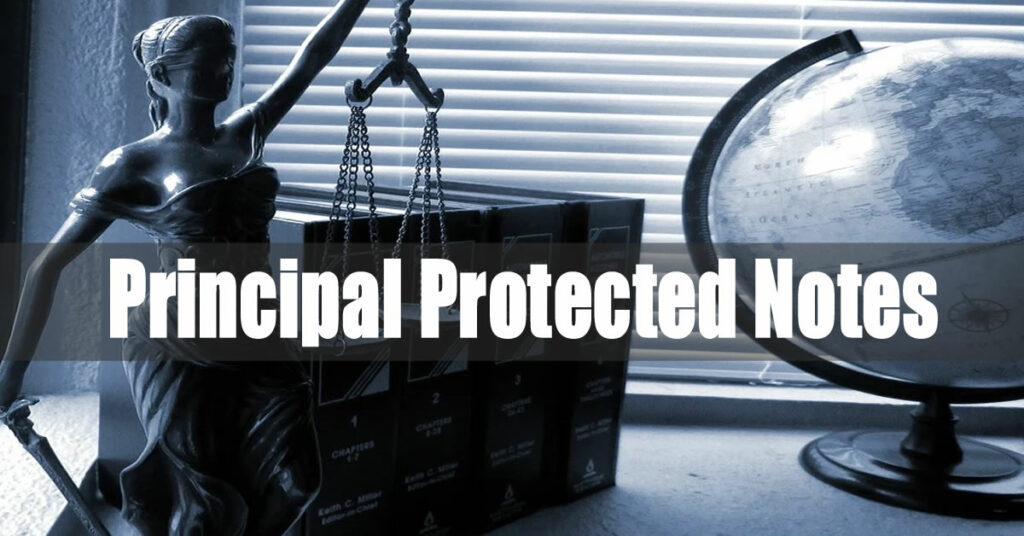Principal protected notes(PPN) are a type of investment in which investors are guaranteed a return on their principal investment. It also gives them a chance to earn profits from their initial investment. This simply means that PPNs are designed to protect your initial investment. If the stock market does well, you will have a share of the gains, but when the market is not favorable, you will have your initial investment back. PPN works by buying insurance cover specifically to protect investors’ initial investments. Only after buying the cover will your money be invested in hedge funds, stocks, mutual funds, and other types of investments.
Unfortunately, we have received calls from investors that were improperly sold principal protected notes that resulted in substantial losses for investors. If you were sold a principal protected note or structured product, please feel free to contact our investment fraud lawyers for a free consultation at 1-800-856-3352.
Here is how principal protected notes work.
Table of Contents
Before trying out the principal protected notes type of investment, it would be very important to understand what it is. This is a type of investment that offers unique benefits to all investors. This is because you are guaranteed that your initial investment will be returned no matter the outcome of the investment. If the investor doesn’t interfere with the investment maturity period, they will either gain or have their initial investments back. Principal-protected notes can be a good alternative to traditional types of investments. The performance of one or more underlying reference assets, such as stock indexes, shares, commodities, bonds, currencies, or a mix of the aforementioned, determines the returns on PPN.
What are the types of PPNs?
There are different types of principal protected notes. Here are some of them:
Bond-linked principal-protected notes
This is the first type of principal protected notes that investors should know about. These types of PPNs are linked to a bond index or how a bond performs.
The equity-linked PPNs
Equity-linked principal protected notes are linked to a stock index or the performance of a specified stock.
Commodity-linked PPNs
As the name suggests, these are the types of PPNs normally linked to the performance of a commodity index or a commodity. These types of PPNs are directly linked to how specific commodities such as gold perform. The commodity’s price determines the return to the investor.
Currency-linked
Currency-Linked types of PPNs are connected to how a currency performs or the currency index. The rate of exchange between the currency in which the initial investment was made and the currency to which it is connected determines the investor’s return.
Structured PPNs
Investment in a portfolio of underlying assets, including bonds, stocks, currencies, and commodities, is required for these PPNs. The portfolio’s performance determines the investor’s return.
What are some of the features of principal protected notes?
PPNs are a type of investment that offers diversity and growth potential to the investor. Before trying this type of investment out, you should know its features. Here are some of them
Assured principal
PPNs assure investors that, regardless of how well the underlying investment performs, they will recover their initial investment, returned at maturity. Therefore, investors do not risk losing everything in the event the market performance isn’t favorable.
Profits on investments
Just like any other type of investment, there is a high chance that investors will earn profits on their initial investments. Returns on investments are always correlated with the performance of an index of the stock market or another benchmark.
Less risky
Compared to other traditional types of fixed investments, principal protected notes are considered to be less risky. This is because investors are assured of recovering their initial investment regardless of the market performance. PPNs may have smaller potential returns but are generally thought to be less hazardous than conventional equities or bonds.
They are good for long-term investments
Principal protected notes are suitable for investors looking for long-term investments that are less risky. PPNs are typically long-term investments with maturities of five to ten years, and the investor’s principal is locked up until that point.
Why choose principal protected notes
There are many valid reasons why investors should try out principal protected notes. Just like other traditional types of investments, PPNs also have terms and conditions that investors must adhere to. Before choosing PPNs, try to learn about them, how they work, and the terms and conditions surrounding the nurture of investment. Here are some of the reasons why many people choose PPNs as a suitable long-term investment
Capital protection
Regardless of how well the investment performs, PPNs ensure that investors will recover their initial investment, back at maturity. Investors wishing to safeguard their investment while still enjoying the chance to generate additional returns may find this interesting.
Chances to earn profits
PPNs offer the chance for additional returns via the initial investment, which is frequently correlated with market performance. PPNs give investors the best chance to earn money without risking their initial investment.
Tax benefits
Depending on the investor’s individual circumstances and the applicable tax regulations in their area, PPNs may provide tax benefits.
Diversification
By including a lower-risk investment, PPNs can help a portfolio become more diversified and lessen its total risk.
Tips to make the most out of principal protected notes
There are different suitable ways through which investors can benefit from principal protected notes. Although PPNs are a less risky type of investment, due diligence is paramount. If you know nothing about the investment, start by researching or consulting a financial advisor. To make your investment worthwhile, here are some of the most important tips for you
Know the conditions of the investment.
Before investing, it’s critical to comprehend the PPN’s terms and conditions, including those relating to the initial investment, the assured principal, the possibility of further returns, the maturity period, and any expenses and fees.
Align with investment goals:
You can also make the most out of your investment by aligning the PPNs investment with your objectives. PPNs should align with an investor’s overall goals and risk tolerance. PPNs may have smaller potential returns but are generally thought to be less hazardous than conventional equities or bonds.
Take into account the fees
PPNs often have significant fees, which can lower the investor’s overall return. Ensure to consider these while assessing the PPNs’ possible return.
Use them for long-term investment
If you have been looking for a long-term investment, principal protected notes can be ideal for you. PPNs should be considered long-term investments because they normally mature in 5–10 years and the principal of the investor is locked up until that time. The good thing about it all is that investors do not suffer any serious losses in the event the market wasn’t favourable to them.
Considerations before investing in principal protected notes
Your financial plan
If you’ve never created a financial plan before, take some time to sit down and honestly assess your current financial status before making any PPNs investment decisions. Establishing your objectives and risk tolerance, either on your own or with the assistance of a financial expert, is the first step to effective investment. Your ability to profit from your investments is not certain. However, if you are aware of the realities around PPNs investing and follow through with a wise plan, you will have nothing to worry about.
Check the issuer’s credit rating
Banks and insurance businesses usually issue principal protected notes. Verify the issuer’s credit rating to make sure they are a reliable financial entity.
Talk to a financial advisor
If you are not sure whether you should invest in PPNs or not, the best way to find out is by talking to an expert. Consider looking for a financial advisor with knowledge of PPNs. Listen to what they have to say and seek advice on whether you should go ahead with the investment or not.
Maturity date
Verify the protected note’s maturity date. This is very important since PPNs take up to 10 years to mature. With PPNs, you only benefit when you wait for the maturity of your investment. The longer the maturity period, the higher the reward and the riskier it is. It would be wise to know what to expect before making your investment plans or moving.
Know the major protection feature
Recognize the working of the principal protection feature. It might be contingent upon other factors, and in some cases, it might not be assured. Therefore, it would be wise to take your time and read about this before making any PPNs investments.
Common mistakes to avoid while investing in PPNs
There are many PPN investment mistakes that investors make these days. Although we learn from mistakes, it would be important to avoid some obvious ones. Here are some of them and how they can be avoided
Not reading PPNs terms and conditions
Make sure you comprehend the principle-protected note’s terms and conditions before making any investments. This includes details on the principal assets as well as how they are used to ensure the return on investors’ initial investment
Not checking the tax implications
It is a big mistake not to check the tax implications of investing in PPNs. This is very important because the tax implications might be different from other traditional fixed investments.
Conclusion
PPNs are a category of investment that promises to offer a return on the principal as well as a possible return on investment. They are primarily distributed by banks and insurance firms and are designed to offer a principal guarantee, which ensures that the investor will receive their initial investment back at maturity regardless of how well the underlying assets perform. PPNs often have lower returns than other investment options, but the return on principal provision lowers the likelihood of losing money. PPNs are frequently utilized as a component of a portfolio of diversified investments because they are typically regarded as low-risk investments.


